CBD Oil for Leukemia: Benefits, Effects & How to Use
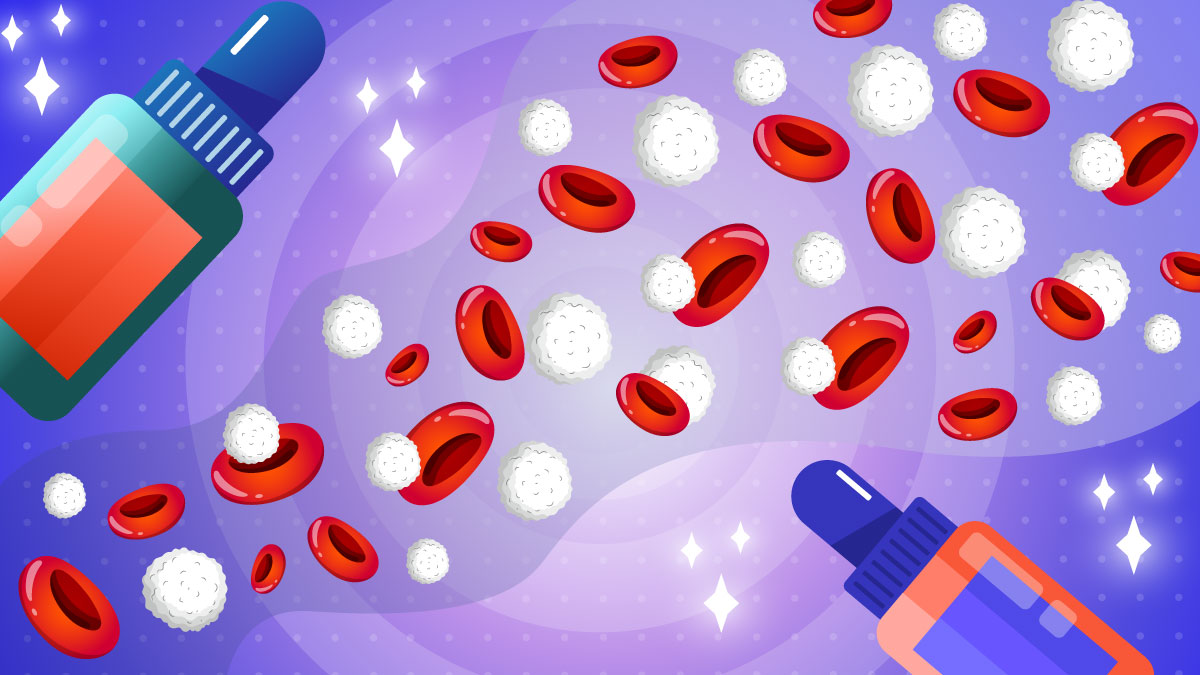
Did you know that cannabis compounds like THC and CBD may alleviate the symptoms of cancer — and even kill the malignant cells while protecting the healthy ones?
The anti-cancer benefits of cannabis have been regularly demonstrated in laboratory conditions, on animal models, and in preclinical human trials. Not only do cannabinoids produce therapeutic effects on tumors, but they also help mitigate certain side effects of conventional treatments (e.g. chemotherapy and radiation).
It’s no wonder why so many people are turning to CBD for different types of cancer, including leukemia, the so-called silent killer. How exactly does CBD help leukemia patients? Can you use it on its own or only as an adjunctive treatment?
In this article, we explain the mechanism of action and cover the recent studies regarding CBD and leukemia.
Benefits of CBD for Leukemia
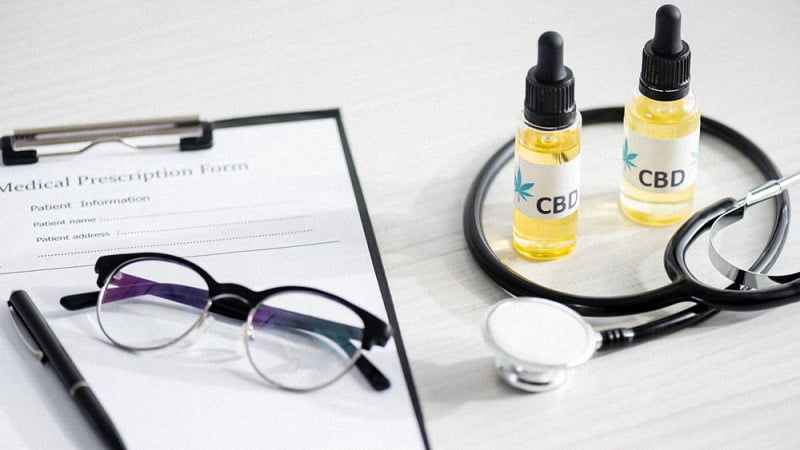
CBD oil has a dense nutritional content that may help ease the symptoms of leukemia among other health conditions. Full-spectrum hemp extracts contain particularly high levels of antioxidants, vitamins, proteins, and essential fatty acids on top of terpenes, terpenoids, and minerals. All these compounds may promote optimal health.
CBD might also have anti-cancer effects that have the potential to stop the growth of malignant cells. However, it’s important to remember that there’s a lack of clinical trials in this area, and the majority of the research comes from animal models and human case reports.
That being said, below we outline some of the ways in which CBD might be useful for leukemia.
CBD Triggers Apoptosis in Cancer Cells
Apoptosis is a process where the body naturally destroys harmful cells to help maintain homeostasis. As mentioned in the previous sections, leukemia results from the abnormal production of immature white blood cells that stuff the lymphatic system and the blood, making it difficult for other types of essential blood cells to grow.
Studies have found that CBD oil packs potent anti-cancer properties that may help reduce the rate at which the malignant cells spread. Moreover, CBD signals the body’s endocannabinoid system (ECS) to produce more of its therapeutic messengers (endocannabinoids) to restore the state of homeostasis. Through apoptosis, CBD is able to eliminate cancer cells in human leukemia (1).
Cannabinoids also interact with the CB2 receptors that are widely present in the immune system. This interaction helps the body distinguish between useful and detrimental cells. It also triggers ceramide and sphingolipid synthesis, triggering the death of unhealthy cells (2).
CBD’s affinity with CB2 receptors may also help produce immunomodulatory effects, optimizing the activity of the immune system. Researchers have highlighted CBD as an antitumorigenic agent that inhibits the reproduction of cancer cells (3). Doing so enables it to control the number of leukemia-affected cells and makes space for the growth of healthy white blood cells, red blood cells, and platelets.
CBD Helps Nourish Healthy Cells
As mentioned above, CBD may be a good source of essential nutrients required for healthy cell development (4). These include terpenoids, flavonoids, vitamins, essential fatty acids, and proteins. Consuming a full-spectrum CBD extract suspended in a carrier fat like MCT oil may increase your intake of many of these compounds.
Nutrients, especially amino acids and vitamins, are paramount for the formation of healthy blood cells. According to various health experts and medical researchers, increasing the bioavailability of these high-quality nutrients may decrease the chance of cell mutation while keeping the healthy cells protected against damage.
Considering the above, CBD oil may be able to lay the ground for healthy white cell production by creating the right environment for them to thrive.
Studies have also found that CBD may be useful in relieving the side effects of chemotherapy and radiation, including:
- Inflammation and pain
- Insomnia and sleep deprivation
- Nausea and vomiting
- Depression
What to Know About Leukemia?
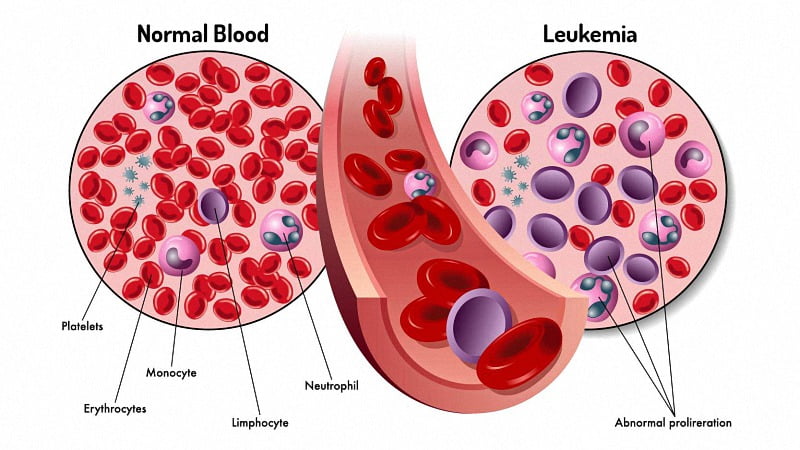
Leukemia is a type of cancer that affects white blood cells. It starts to develop in the bone marrow, where it causes abnormal growth of these cells, mutating and multiplying in number. White blood cells regulate the performance of the immune system by fighting disease-causing bacteria.
Leukemia causes kind of a chain reaction in the body. The excess white cells are under-developed and thus serve no purpose in the body. However, abnormal production disrupts the growth of other important blood cells, such as platelets, red blood cells, etc. A lower red blood count (RBC) can further put a person’s health at risk since red blood cells are responsible for transporting oxygen, food nutrients, and other vital components to various parts of the body.
Researchers haven’t yet identified the cause of leukemia, but there are several factors that can spur its development, including:
- Poor diet
- Unhealthy lifestyle
- Genetic burden
According to statistics, more than 75% of reported leukemia cases refer to children.
Types of Leukemia
There are several types of leukemia depending on the type of white blood cells affected and the rate at which it deteriorates.
The four major types of leukemia are:
- Acute myelogenous leukemia (AML)
- Acute lymphoblastic leukemia (ALL)
- Chronic myelogenous leukemia (CML)
- Chronic lymphocytic leukemia (CLL)
Below we share a brief overview of each.
Acute Myelogenous Leukemia (AML)
AML triggers the body to produce too many white blood cells known as myelocytes. Leukemia starts building up in your bone marrow and blood, leaving less space for the healthy blood cells. The symptoms of AML include infections, anemia, and easy bleeding. AML is more common in men than in women. It also affects kids, but the prevalence of AML increases with age.
Acute Lymphoblastic Leukemia (ALL)
ALL stimulates the excess production of lymphocytes. These white blood cells can’t fight infection effectively, building up in your bone marrow and blood, reducing the room for your healthy blood cells. Similar to AML, this type of leukemia may cause easy bleeding, anemia, and infections. ALL typically shows up and worsens in a very short time span.
Chronic Myelogenous Leukemia (CML)
CML causes the same symptoms as AML and ALL. It deteriorates slowly and affects more men than women. CML is most common in adults over 50s; it rarely affects children.
Chronic Lymphocytic Leukemia (CLL)
This is the chronic form of ALL and involves the same reaction as the other leukemia types. It commonly affects adults in their 60s and over. Women are less likely to develop CLL than men. Patients with CLL are more exposed to infections due to a poorly functioning immune system.
Symptoms of Leukemia
- Anemia
- Bone pain
- Easy bruising
- Easy bleeding
- Enlarged spleen
- Fatigue
- Feeling full or bloated
- Fever and chills
- Frequent infections
- Headaches
- Night sweats
- Physical weakness
- Petechiae
- Shortness of breath
- Swollen or enlarged gums
- Swollen lymph nodes
- Unusual pallor
- Weight loss
Current Treatments & Their Side Effects
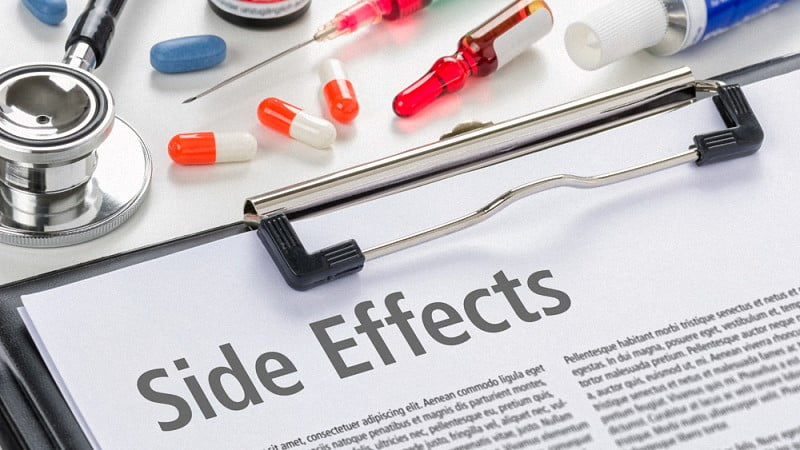
Before recommending a treatment protocol for leukemia, doctors run several examinations to diagnose the condition. Usually, a complete blood count and tissue biopsy from your bone marrow are performed.
Treatments for leukemia vary from radiation to chemotherapy and bone marrow transplant; each of them is effective to some extent, but it also has side effects that can cause the patient to feel more miserable than cancer itself. They may cause severe pain, nausea, depression, loss of appetite, disrupt your sleep, and trigger anxiety.
Common leukemia treatments include:
- Chemotherapy – chemo is the go-to treatment for many types of cancer, including leukemia. It uses chemicals that kill leukemia cells and can be administered in one dose or as a mixture of drugs depending on what type of leukemia you’re struggling with. Chemotherapy may come as an injection or a pill.
- Biological Therapy – this form of treatment helps your immune system identify leukemia cells and eliminate them. Side effects of biological therapy include fever, chills, fatigue, changes in blood pressure, and overall weakness.
- Targeted Therapy – targeted therapies are aimed to attack specific cancer cell cultures. For instance, Gleevec, a commonly used targeted therapy, inhibits protein action in leukemia cells when you suffer from chronic myelogenous leukemia. There’s a risk of side effects such as high blood pressure, skin problems, and gastrointestinal perforation.
- Radiation Therapy – radiation uses high-energy beams like X-rays that destroy leukemia cells and prevent further proliferation of cancer. Your doctor may recommend radiation over your entire body or just a specific area if there’s a higher concentration of leukemia cells. The doctor may apply radiation therapy before a stem cell transplant to prepare you for the surgery.
- Stem Cell Transplant – this procedure replaces unhealthy bone marrow with a healthy one. Patients receive a high dose of radiation therapy or chemotherapy before their stem cell transplant to remove unhealthy bone marrow. An infusion with stem cells is then applied to form blood that rebuilds the bone marrow.
Are There Any Risks & Side Effects of Using CBD for Leukemia?
CBD is an acknowledged adaptogenic compound with minimal side effects. Many international health agencies, such as the World Health Organization (WHO), have reported that CBD is well tolerable in humans, even in doses as high as 1,500 daily over the course of several weeks. When taken in regular doses, CBD oil doesn’t have adverse reactions. However, large doses may cause the following side effects:
- Dry mouth
- Appetite fluctuation
- Dizziness
- Fatigue
- Diarrhea
CBD-induced drug interaction is another concern for patients with leukemia. CBD inhibits the activity of the cytochrome p450, a system of enzymes that metabolize active ingredients in medications. If you take any medication that has a grapefruit warning on it, you probably shouldn’t take it along with CBD oil. Consult a doctor to reduce the likelihood of such events.
How to Use CBD for Leukemia?
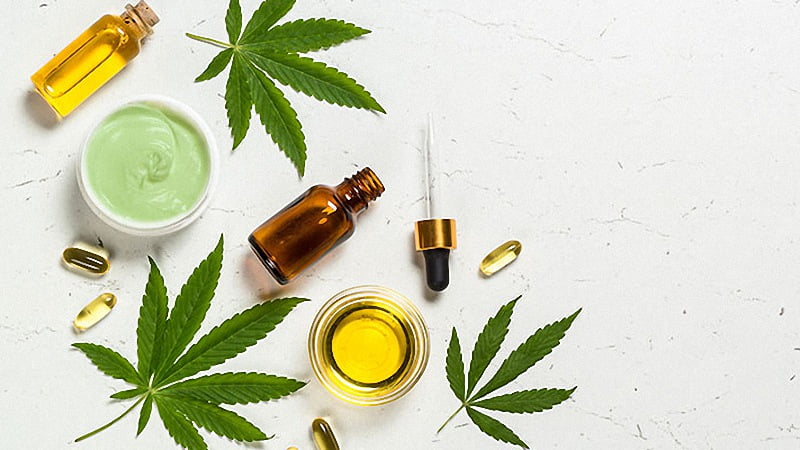
CBD comes in many different forms. Its potential to reduce the symptoms of various health conditions can make it challenging to find the right delivery method. Here we highlight some of the most common methods of consuming CBD for leukemia:
- CBD Oil – CBD oil is a sublingual product that involves putting the CBD extract under the tongue and allowing it to stay for up to 60 seconds before swallowing. The sublingual route of administration allows the CBD to be absorbed directly into the bloodstream. It is considered the most effective way of delivering CBD into the system of all methods that avoid inhalation. Sublingual CBD comes in three types of products: oil drops, tinctures, and sprays.
- CBD Capsules – oral products like capsules are the most popular form of CBD among on-the-go users. If you live a busy lifestyle and don’t have the time to measure out your doses with a dropper — but instead prefer a fixed dose of CBD per serving — capsules are a decent alternative to oils. CBD capsules are also odorless and tasteless, so you don’t have to deal with the botanical aftertaste. However, since capsules need to pass through the digestive system, they act slower than oils, usually within 40–90 minutes after application.
- CBD Edibles – CBD is infused into a lot of foods and drinks nowadays. You can choose between gummies, honey sticks, protein bars, chocolates, and beverages like tea or coffee. Edibles offer the most enjoyable way to consume CBD, but similar to capsules, they have a delayed onset and may lose some of their potency on their way to the bloodstream due to the first-pass metabolism in the liver.
- CBD Vapes – vaporized CBD reaches your system through inhalation. Once you pull the CBD vapor into your lungs, it will absorb into the bloodstream through the lung tissue, ensuring fast-acting effects and high availability for the body. The vape pen heats the CBD liquid to the point where it releases cannabinoid-rich vapor, avoiding combustion. The effects of vaporized CBD are usually felt within minutes, but they have the shortest duration, up to 3–4 hours.
- CBD Topicals – when you apply CBD topically, it interacts with the cannabinoid receptors that are located in the skin’s epidermis layer. From there, it produces its anti-inflammatory and analgesic effects, contributing to less pain in leukemia patients. Topicals are available as creams, balms, gels, lotions, and salves; their absorption rate and duration of effects vary depending on the formulation. People commonly use them for skincare, but some people also claim to find relief from painful flare-ups during leukemia.
CBD Dosage for Leukemia
Dosing CBD is a tricky job for several reasons.
First, everybody is different; your age, gender, weight, metabolism, eating habits, and severity of your leukemia symptoms will all influence your effective dosage range. According to some researchers, a low dose of CBD ranges from less than 1 mg to 50 mg/kg/day.
The good news is that you can’t fatally overdose on CBD, so experimenting with different doses isn’t a risky business. Nevertheless, if you want to make sure you’re not wasting too much CBD, we recommend that you start low and slow. Start with 10 mg of CBD twice daily and observe the effects for one week. If you don’t feel any difference in your symptoms, increase the dosage, and continue for the next few days. Adjust the dose until you find the one that works for you.
If you’re thinking of adding CBD oil to your anti-leukemia regime, consult this idea with a holistic doctor experienced in cannabis use. Doing so will help you determine the effective dose and avoid the aforementioned CBD-drug interactions.
Summarizing the use of CBD for Leukemia
CBD may be an effective treatment for the symptoms and side-effects of leukemia and its conventional treatments as it also gives an anti-nausea effect. CBD and other cannabinoids are also useful in many other types of cancer. However, the subject is still under-researched when it comes to human trials, so doctors don’t recommend using CBD as a replacement for leukemia therapy.
When browsing through different CBD products, make sure to choose a high-quality CBD oil from a reputable brand. Despite the boom in CBD and cannabis in general, the market remains unregulated due to the particular classification of hemp-derived CBD as health supplements. Be sure to talk to your physician for professional advice regarding the consumption method, CBD dosage, and potential contraindications.
Literature:
- McKallip, Robert J et al. “Cannabidiol-induced apoptosis in human leukemia cells: A novel role of cannabidiol in the regulation of p22phox and Nox4 expression.” Molecular pharmacology vol. 70,3 (2006): 897-908. doi:10.1124/mol.106.023937
- Nichols, James M, and Barbara L F Kaplan. “Immune Responses Regulated by Cannabidiol.” Cannabis and cannabinoid research vol. 5,1 12-31. 27 Feb. 2020, doi:10.1089/can.2018.0073
- Scott, Katherine A et al. “Anticancer effects of phytocannabinoids used with chemotherapy in leukemia cells can be improved by altering the sequence of their administration.” International journal of oncology vol. 51,1 (2017): 369-377. doi:10.3892/ijo.2017.4022
- Pagano, Stefano et al. “Biological effects of Cannabidiol on normal human healthy cell populations: Systematic review of the literature.” Biomedicine & pharmacotherapy = Biomedicine & pharmacotherapies vol. 132 (2020): 110728. doi:10.1016/j.biopha.2020.110728